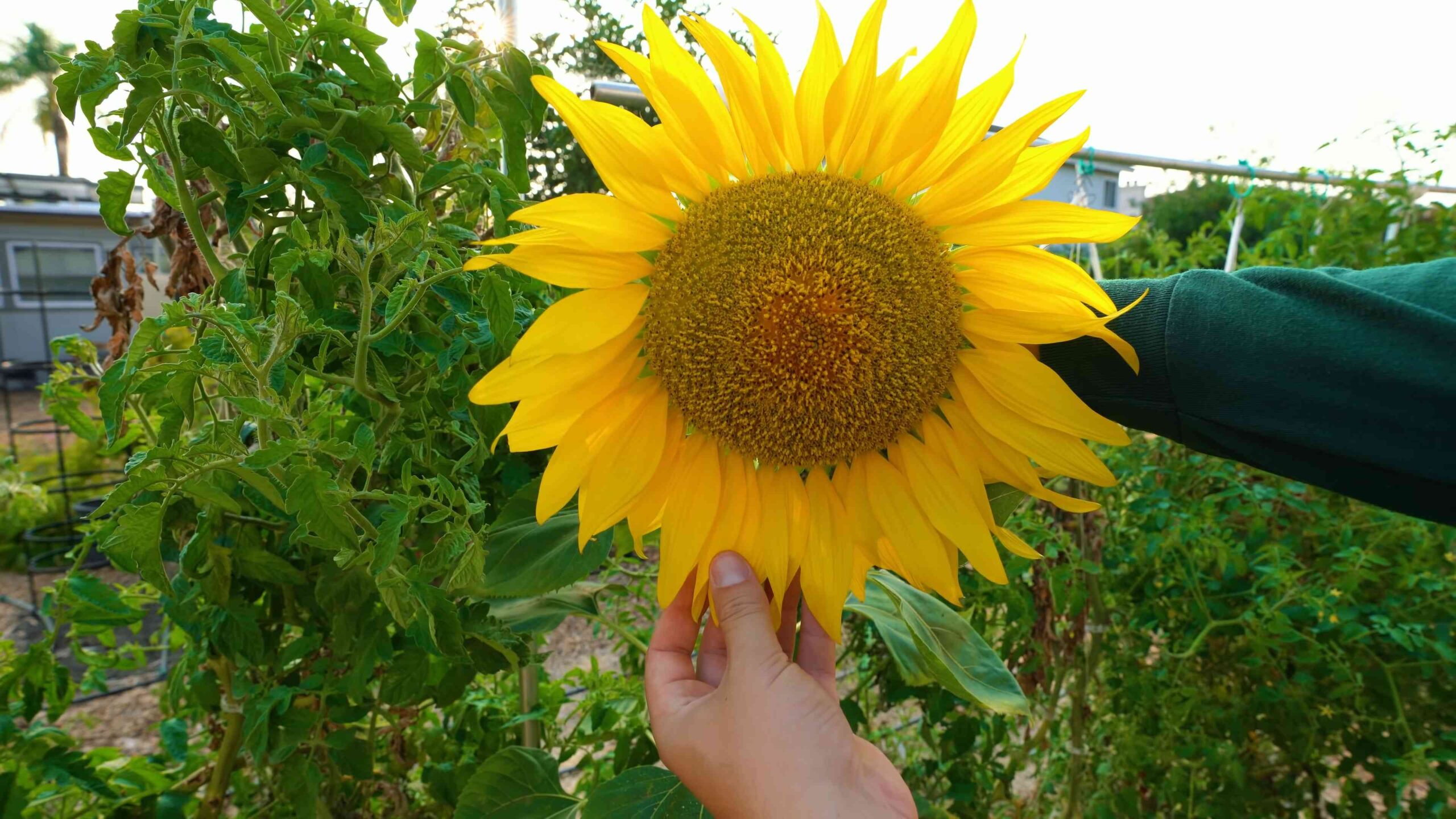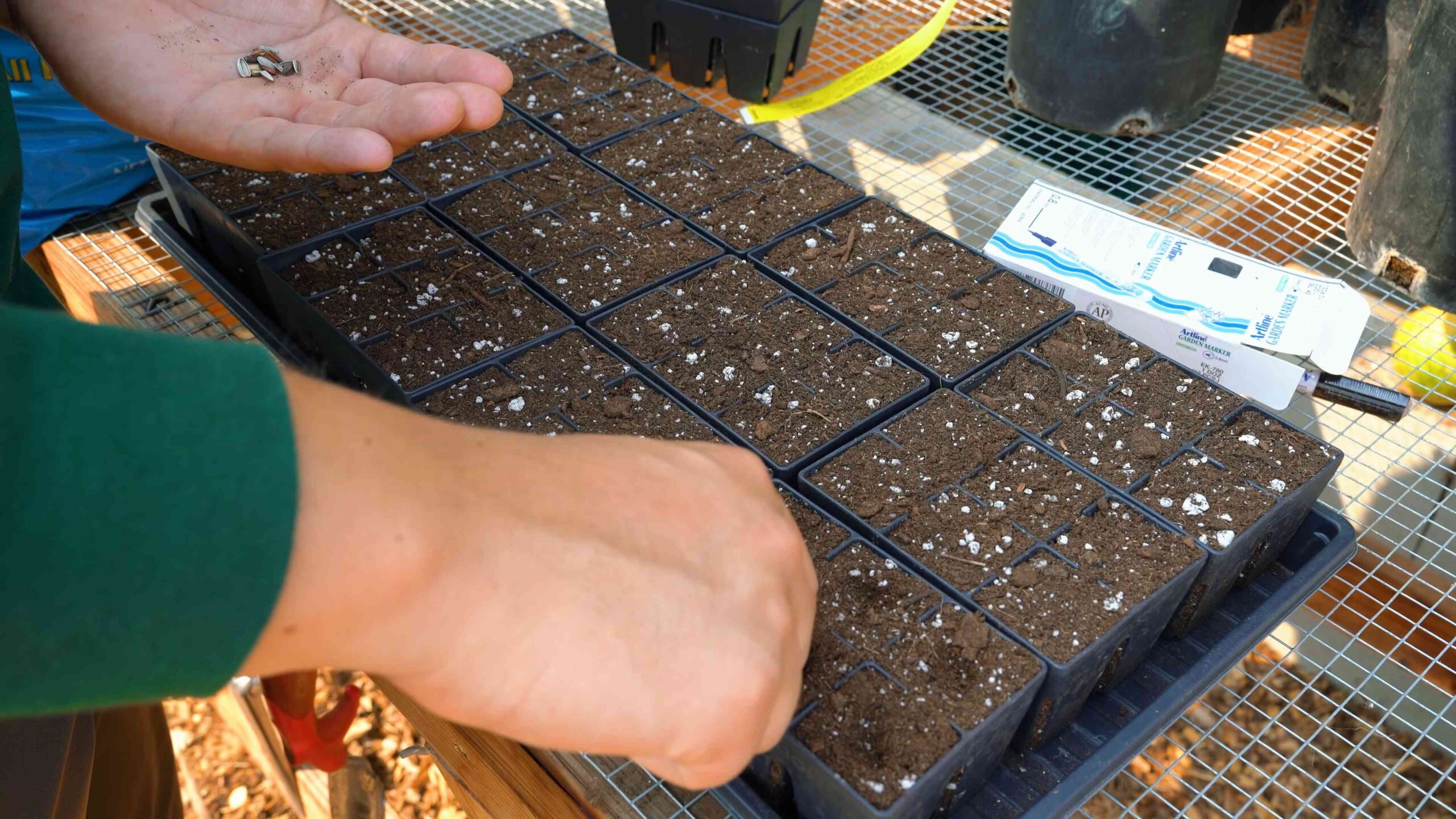Sunflower gardening tips are your ticket to transforming your backyard into a vibrant, cheerful haven! Imagine waking up each morning to the sight of these majestic blooms, their faces turned towards the sun, radiating warmth and happiness. But let’s be honest, growing these giants can sometimes feel a little daunting, right? That’s where this DIY guide comes in – I’m here to share some simple yet effective tricks and hacks that will make your sunflower gardening journey a breeze.
Sunflowers have a rich history, dating back thousands of years to North America, where they were cultivated not just for their beauty, but also for food, oil, and medicinal purposes. They hold cultural significance in many societies, symbolizing adoration, loyalty, and longevity. Today, we grow them for all those reasons, plus the sheer joy they bring!
Why do you need these sunflower gardening tips? Well, because sometimes, despite our best efforts, things don’t go as planned. Pests, poor soil, or even just a lack of knowledge can hinder your sunflower’s growth. I’ve compiled a list of easy-to-implement DIY solutions that will help you overcome these challenges and ensure your sunflowers thrive. From simple soil amendments to clever pest control methods, I’ve got you covered. Get ready to unlock the secrets to growing the tallest, most beautiful sunflowers you’ve ever seen!

DIY Sunflower Power: From Seed to Stunning Bloom!
Hey there, fellow gardening enthusiasts! I’m so excited to share my ultimate guide to growing magnificent sunflowers. These towering beauties are not only visually stunning but also incredibly rewarding to cultivate. Get ready to transform your garden into a sunny paradise!
Choosing Your Sunflower Variety
Before we dive into the nitty-gritty, let’s talk about sunflower varieties. There’s a whole world beyond the classic tall yellow ones! Consider these options:
* Mammoth: The classic giant, reaching impressive heights. Perfect for making a statement.
* Dwarf Varieties (e.g., ‘Teddy Bear’, ‘Little Becka’): Ideal for smaller gardens or containers. They’re fluffy and adorable!
* Red Sunflowers (e.g., ‘Moulin Rouge’, ‘Chianti’): Add a touch of drama with their deep red petals.
* Lemon Queen: A beautiful, bright yellow variety with multiple blooms per plant.
* Russian Mammoth: Another giant variety, known for its huge seed heads.
Think about the size of your garden, your desired aesthetic, and whether you want single-stem or branching sunflowers.
Getting Started: Planting Your Sunflower Seeds
Sunflowers are relatively easy to grow from seed, which is one of the reasons I love them so much! Here’s how to get started:
1. Timing is Key: Sunflowers thrive in warm weather, so wait until after the last frost to plant. I usually aim for late spring or early summer. Soil temperature should be at least 50°F (10°C).
2. Choosing the Right Spot: Sunflowers need at least 6-8 hours of direct sunlight per day. Pick a sunny location with well-drained soil.
3. Soil Preparation: Sunflowers aren’t too picky about soil, but they’ll appreciate a little TLC. Amend the soil with compost or well-rotted manure to improve drainage and fertility. I like to work it in about 6-8 inches deep.
4. Sowing the Seeds: Plant seeds about 1 inch deep and 6 inches apart. If you’re planting multiple rows, space them about 2-3 feet apart, especially for larger varieties.
5. Watering: Gently water the soil after planting. Keep the soil consistently moist but not waterlogged until the seedlings emerge.
6. Protecting from Pests: Birds and squirrels love sunflower seeds just as much as we do! You can cover the planting area with netting or row covers until the seedlings are a few inches tall. I’ve also had success using bird netting draped loosely over the area.
Nurturing Your Sunflowers: From Seedling to Stalk
Once your sunflowers have sprouted, it’s time to provide them with the care they need to thrive.
1. Thinning: Once the seedlings are a few inches tall, thin them to the desired spacing. For large varieties, aim for 1-2 feet apart. For smaller varieties, 6-12 inches apart should be fine.
2. Watering: Water deeply and regularly, especially during dry spells. Sunflowers need plenty of water to support their rapid growth. I usually water them deeply once or twice a week, depending on the weather.
3. Fertilizing: Sunflowers are heavy feeders, so fertilize them regularly with a balanced fertilizer. I like to use a slow-release fertilizer at planting time and then supplement with a liquid fertilizer every few weeks. Follow the instructions on the fertilizer packaging.
4. Staking (Optional): Tall sunflower varieties may need staking to prevent them from toppling over in strong winds. Insert a sturdy stake near the base of the plant and gently tie the stem to the stake with soft twine. I’ve found that bamboo stakes work really well.
5. Weed Control: Keep the area around your sunflowers free of weeds. Weeds compete with sunflowers for water and nutrients. Hand-pulling weeds is the best option, as herbicides can damage your sunflowers.
6. Pest and Disease Control: Keep an eye out for pests and diseases. Common sunflower pests include aphids, sunflower beetles, and caterpillars. Diseases include powdery mildew and rust. Treat infestations and diseases promptly with appropriate insecticides or fungicides. I prefer to use organic options whenever possible. Neem oil is a great all-purpose solution.
Dealing with Common Sunflower Problems
Even with the best care, you might encounter a few challenges along the way. Here’s how to troubleshoot some common sunflower problems:
* Drooping Sunflowers: This is usually a sign of underwatering. Water deeply and regularly, especially during hot weather.
* Yellowing Leaves: This could be caused by nutrient deficiencies, overwatering, or disease. Check the soil drainage and fertilize if necessary.
* Lack of Blooms: This could be due to insufficient sunlight, poor soil, or over-fertilizing with nitrogen. Make sure your sunflowers are getting enough sunlight and that the soil is well-drained. Avoid using fertilizers that are high in nitrogen, as this can promote leafy growth at the expense of blooms.
* Pests: As mentioned earlier, keep an eye out for pests and treat them promptly.
* Diseases: Similarly, watch for signs of disease and treat them accordingly.
Harvesting Sunflower Seeds
One of the best things about growing sunflowers is harvesting your own seeds! Here’s how to do it:
1. Timing: The best time to harvest sunflower seeds is when the back of the flower head turns brown and the petals begin to dry and fall off. The seeds should be plump and slightly loose.
2. Protecting from Birds: Birds love sunflower seeds, so you may need to protect the flower heads with netting or paper bags to prevent them from eating all the seeds before you can harvest them. I’ve used old pantyhose with great success!
3. Harvesting: Cut the flower head off the stalk, leaving about 1 foot of stem attached.
4. Drying: Hang the flower head upside down in a warm, dry, well-ventilated place for several weeks to allow the seeds to dry completely. You can cover the flower head with a paper bag to catch any seeds that fall out.
5. Threshing: Once the flower head is dry, you can remove the seeds by rubbing the flower head with your hands or a stiff brush.
6. Cleaning: Separate the seeds from the chaff (the dried flower parts) by winnowing them in a breeze or using a sieve.
7. Storing: Store the seeds in an airtight container in a cool, dry place. They should last for several months.
Using Your Sunflower Seeds
Now that you’ve harvested your sunflower seeds, what can you do with them?
* Eating: Sunflower seeds are a healthy and delicious snack. You can eat them raw, roasted, or salted.
* Planting: Save some seeds to plant next year!
* Bird Food: Sunflower seeds are a favorite food of many birds. You can put them in bird feeders or scatter them on the ground.
* Sunflower Oil: You can press your own sunflower oil, although this requires specialized equipment.
Creative Ways to Use Sunflowers in Your Garden
Beyond just growing them for their beauty and seeds, here are some fun and creative ways to incorporate sunflowers into your garden:
* Living Fences: Plant a row of tall sunflowers to create a natural fence or screen.
* Sunflower Houses: Create a whimsical playhouse for children by planting sunflowers in a circle and training them to grow together.
* Pollinator Gardens: Sunflowers attract bees, butterflies, and other pollinators, making them a valuable addition to any pollinator garden.
* Cut Flowers: Sunflowers make beautiful cut flowers. Cut them in the morning when they are fully open and place them in a vase of water.
* Dried Flower Arrangements: Dry sunflower heads and use them in dried flower arrangements.
My Personal Tips for Sunflower Success
* Don’t be afraid to experiment! Try different varieties and planting techniques to see what works best in your garden.
* Pay attention to your sunflowers. They’ll tell you what they need.
* Enjoy the process! Growing sunflowers is a rewarding experience.
Growing sunflowers is such a joy, and I hope this guide has inspired you to give it a try. With a little care and attention, you can have a garden full of these sunny beauties! Happy gardening!

Conclusion
So, there you have it! Mastering the art of growing sunflowers isn’t just about scattering seeds and hoping for the best. It’s about understanding their needs, providing the right environment, and employing a few clever DIY tricks to give them that extra boost. This guide has armed you with the knowledge to cultivate not just sunflowers, but a vibrant, thriving garden that will be the envy of the neighborhood.
Why is this DIY approach a must-try? Because it empowers you to take control of your sunflower’s destiny. Instead of relying solely on commercial fertilizers or pre-packaged solutions, you’re using readily available resources and simple techniques to create a personalized growing plan. This not only saves you money but also allows you to tailor the care to your specific soil conditions and climate. Think of it as a bespoke suit for your sunflowers – perfectly fitted and guaranteed to impress.
Beyond the basics, there’s a world of sunflower variations to explore. Consider planting dwarf varieties like ‘Teddy Bear’ for smaller spaces or experimenting with different colors like the deep reds of ‘Moulin Rouge’ or the creamy yellows of ‘Italian White.’ You can even try succession planting, sowing seeds every few weeks, to ensure a continuous bloom throughout the summer. And don’t forget the importance of companion planting! Marigolds, for example, can help deter pests, while beans can fix nitrogen in the soil, benefiting your sunflowers.
But the real magic happens when you put these tips into practice. Imagine the satisfaction of watching your tiny seedlings transform into towering giants, their faces turned towards the sun. Picture the joy of harvesting your own sunflower seeds for a healthy snack or sharing them with the birds. Envision the beauty of your garden bursting with color and life, all thanks to your own hard work and ingenuity.
We strongly encourage you to embrace these DIY sunflower gardening tips and embark on your own sunflower-growing adventure. Don’t be afraid to experiment, adapt, and learn from your experiences. Every garden is unique, and what works for one person may not work for another. The key is to observe your plants, listen to their needs, and adjust your approach accordingly.
And most importantly, we want to hear about your journey! Share your successes, your challenges, and your own unique DIY tricks in the comments below. Let’s create a community of sunflower enthusiasts who can learn from each other and inspire others to discover the joy of growing these magnificent flowers. Your insights could be invaluable to someone just starting out, and together, we can help everyone achieve sunflower success. So, grab your seeds, get your hands dirty, and let the sunflower magic begin! Let us know how these sunflower gardening tips worked out for you!
Frequently Asked Questions (FAQ)
Q: What is the best time to plant sunflower seeds?
A: The ideal time to plant sunflower seeds is after the last frost, when the soil has warmed up to at least 50°F (10°C). This typically falls between late spring and early summer, depending on your region. Check your local weather forecast and planting calendars for the most accurate timing. Planting too early can lead to poor germination or frost damage, while planting too late may result in smaller plants and fewer blooms.
Q: How much sunlight do sunflowers need?
A: Sunflowers are aptly named for their love of sunshine! They require at least 6-8 hours of direct sunlight per day to thrive. Choose a planting location that receives full sun throughout the day. If your sunflowers don’t get enough sunlight, they may become leggy and produce fewer flowers.
Q: What type of soil is best for sunflowers?
A: Sunflowers prefer well-drained soil that is rich in organic matter. Amend your soil with compost or other organic materials before planting to improve drainage and fertility. A slightly acidic to neutral soil pH (around 6.0 to 7.5) is ideal. Avoid planting in heavy clay soil, as this can lead to root rot.
Q: How often should I water my sunflowers?
A: Water your sunflowers deeply but infrequently, allowing the soil to dry out slightly between waterings. Overwatering can lead to root rot, while underwatering can stress the plants and reduce their growth. During hot, dry weather, you may need to water more frequently. A good rule of thumb is to water when the top inch of soil feels dry to the touch.
Q: Do sunflowers need fertilizer?
A: While sunflowers are relatively low-maintenance, they can benefit from occasional fertilization. Apply a balanced fertilizer (e.g., 10-10-10) at planting time and again when the plants are about 1 foot tall. Avoid over-fertilizing, as this can lead to excessive foliage growth at the expense of flower production. You can also use organic fertilizers like compost tea or fish emulsion.
Q: How can I protect my sunflowers from pests and diseases?
A: Sunflowers are generally resistant to pests and diseases, but they can be susceptible to certain problems. Common pests include aphids, sunflower beetles, and birds. Control aphids with insecticidal soap or a strong stream of water. Handpick sunflower beetles or use an appropriate insecticide. Protect your seeds from birds by covering the flower heads with netting or paper bags. Diseases like powdery mildew and rust can be prevented by ensuring good air circulation and avoiding overhead watering.
Q: When should I harvest sunflower seeds?
A: Sunflower seeds are ready to harvest when the back of the flower head turns brown and the seeds are plump and easily removed. Cut the flower head off the stalk and hang it upside down in a dry, well-ventilated place for a few weeks to allow the seeds to dry completely. Once dry, rub the seeds out of the flower head and store them in an airtight container.
Q: Can I grow sunflowers in containers?
A: Yes, you can grow sunflowers in containers, but you’ll need to choose a large container (at least 5 gallons) and use a well-draining potting mix. Dwarf varieties are best suited for container gardening. Be sure to provide adequate sunlight and water, and fertilize regularly.
Q: What are some creative ways to use sunflowers in my garden?
A: Sunflowers can be used in a variety of creative ways in your garden. Plant them along fences or walls to create a living screen. Use them as a backdrop for other flowers. Create a sunflower house for children. Or simply plant them in a mass planting for a stunning display of color. The possibilities are endless!
Q: Are there any specific sunflower gardening tips for dealing with strong winds?
A: Yes, strong winds can be a challenge for sunflowers, especially taller varieties. To protect your plants, consider staking them with sturdy bamboo stakes or wooden posts. You can also plant them in a sheltered location, such as near a fence or building. Another option is to choose shorter, more compact varieties that are less susceptible to wind damage.





Leave a Comment